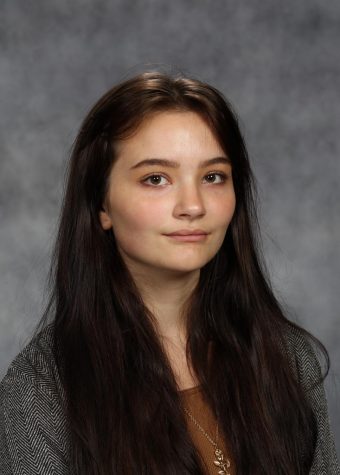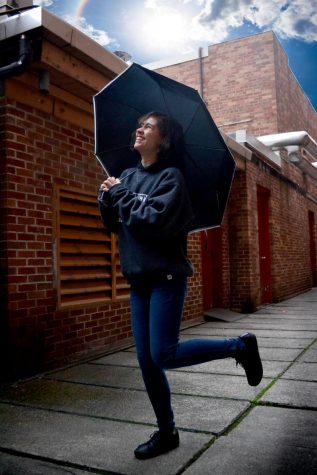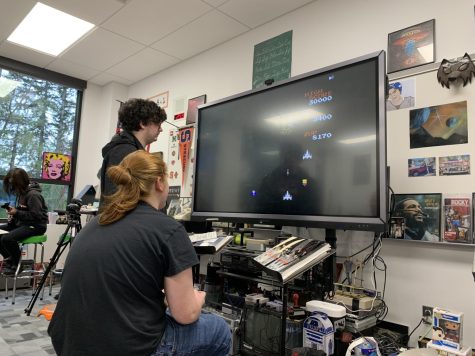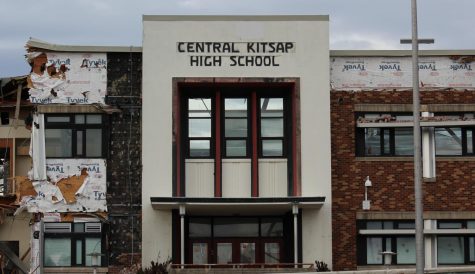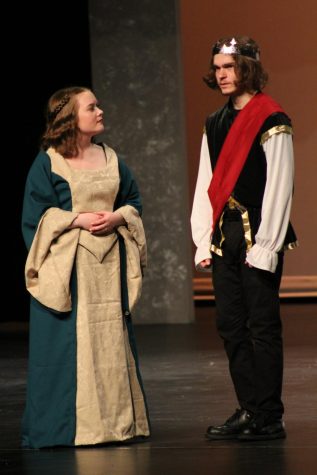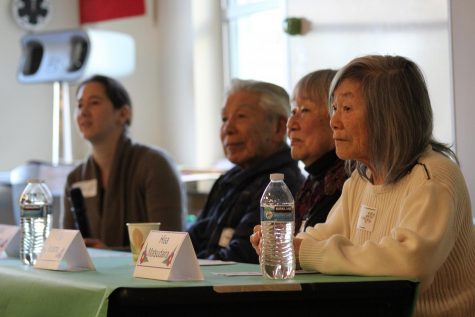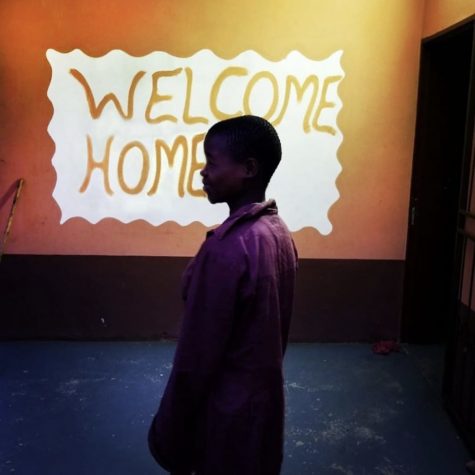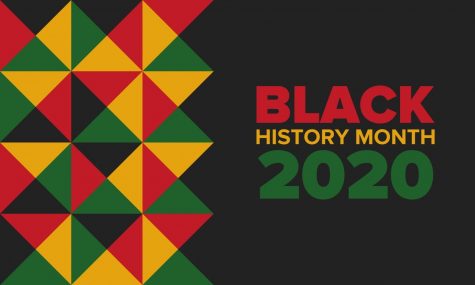The Unique Students of CKHS
The special education students are more than what they are assumed to be.
The hard-working students and teachers that work to make the special education program here at CKHS
 Central Kitsap High School is home to a variety of students who come from a variety of different backgrounds. Every student has something unique about them, whether it be their intelligence, athletic ability, or their personalities. Despite this, many students in CKHS still don’t fully understand the full spectrum of unique personalities they are exposed to, especially the students enrolled in the special education program.
Central Kitsap High School is home to a variety of students who come from a variety of different backgrounds. Every student has something unique about them, whether it be their intelligence, athletic ability, or their personalities. Despite this, many students in CKHS still don’t fully understand the full spectrum of unique personalities they are exposed to, especially the students enrolled in the special education program.
The special education program here at CKHS is home to so many unique students with exceptional personalities. These students can be seen throughout school doing various tasks and interacting with the rest of the student body. These tasks typically include cleaning the tables in the cafeteria, mopping the floors, and picking up the recycling around the school. Many students find these tasks odd, or even demeaning to the special education students.
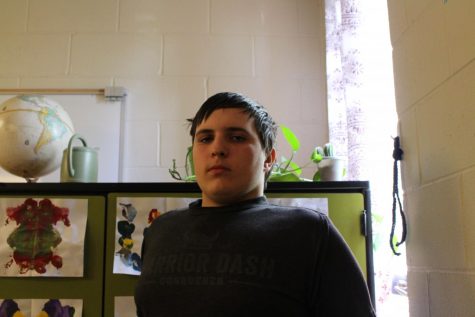
However, what the abled students fail to see is that this is actually a program to help the special education students develop habits that will help them when they are ready for adulthood.
“We have an incredible District Level Program that helps students perform skills that they would need for jobs, and behaviors that they would need on the job.” Susan Rosenquist, Department Head of Special Education states. “Students that are performing these services are doing a fabulous job and a great service to our school,” Rosenquist continues. Doing activities such as cleaning up tables and picking up trash can help these students prepare for jobs such as ones in fast food, which will be a huge stepping stone for the student themselves.
Even the special education students enjoy doing these activities, “It is a good thing to do and maintain,” Tommy Hoskins, a student in special education at CKHS comments.
“I do cleaning up with the cafe. I do enjoy it,” Clayton Amundson, also a special education student at CKHS comments.
On its surface, these activities may look demeaning for these students. However, these activities are providing these students with a stepping stone that will ease their progression into adulthood.
The special education students can be everywhere around the school. While students go about their day, during third lunch, freshman Michael Delarosa says that “during my lunch, they [special education students] usually walk to the auxiliary gym and play games there for a bit then walk back to their homeroom. I’ve also seen them walk to other places during class time in the hallways.” It’s quite common to see the special education students walking around the school, especially near the stairs that enter the cafeteria.
Delarosa also adds that he also notices that “the teachers are really nice and so are some of the students.” The teachers apart of the special education program do the most for the students. Dora Harris, Susan Rosenquist, and Laura Jackson work diligently to make sure their students are safe, happy, and feel as though they are getting the most out of their education.
“We work on job skills, the students volunteer, I set up the opportunities. We get them ready for adulthood, whether that be post-secondary school or something else,” Dora Harris, a special education teacher comments. These tasks can be quite the handful but Harris is able to work through it without sweat and provide these special education students with top tier education.
“The students need a lot of practice and a high level of supervision. Our goal is to help the community understand the students and the students understand the community,” Harris continues. She also mentions her struggles with the special education communities, “the high needs, the students have a lot of ability but to access that they need a lot of support. We have 15 different community job sites, we have about 17 students that will go to a variety of job sites and learn how to keep a schedule and work. There’s a lot going on.”
Junior Megann McCrary sees the program as “super helpful to the students that need help,” and she notices that the teachers “are super kind to students and make them feel not alone.” McCrary brings up an example from P.E. where “the special education teachers encourage and have conversations with them,” and that “it’s super sweet and a great thing to see that they [the special education students] are being included.
It’s also mentioned by McCrary that “with the students with IEPs, the teachers will read tests to them and the students will be in slightly easier classes so they can be successful in school and make other accommodations that they qualify for so they get a fair advantage for success.”
The special education program is quite different from the average public high school program. For starters, the ages of the students range from 15 to their early 20s. This is because the main focus of the special education program is to prepare these kids for their adulthood, whether that comes at 18 or later. “This is the students’ last opportunity to have a community like this, and we want them to be prepared for when it’s time for them to leave. We really believe that these students deserve good working and academic opportunities,” Harris comments.
Since the special education program is so different from the average public high school education, there are some characteristics of each that don’t mesh well together. Joseph Goulet, professor at the University of Winnipeg states, “the physical layout of the school may not assist a child with visual or mobility challenges. The child should feel safe, secure and valued as a member of the student body. Teachers working with the child must have training in the special needs of the child. There must be a curriculum that both enhance the child’s social life and gives him/her practical work.” Goulet has studied mental disabilities in children for a long time. According to Expertise Finder, Goulet is an expert in ADHD, childhood anxiety, childhood neurodevelopmental disorders, education of special needs children, fetal alcohol spectrum disorder, neuropsychological disorders, obsessive-compulsive disorder, pervasive developmental disorder, and Tourette’s syndrome.
There really isn’t anything the administration could do about the layout of not only the current school but the new one as well. However, the administration, teachers, and student body are doing their absolute best to reassure these students that they are in a safe and healthy environment.
However, there are still quite a few students who are not doing their best to make these students feel welcome. Delarosa states, “maybe the program shouldn’t be at CKHS. Lots of people in our school make fun of these kids and can be bullied. It would be better somewhere else, so they won’t get treated badly from others.”
Half of this is true, the special education students here are constantly made fun of by abled students for things that are completely out of their control. However, special education students should not be removed just because a few abled students don’t understand basic respect. These students deserve to have the same high school life as the rest of the student body. And by removing them from a public school into a different school, they may never get the full experience they truly deserve.
What is needed is a change in attitude, the student body needs to stop treating these students as animals in a zoo they can ogle at. The student body needs to stop treating these students as a circus show that they can watch during lunch. Each of these students has their own individual interests that make them their own unique personality.
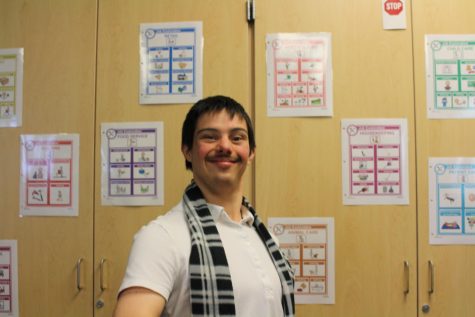
Peter Colvin is a special education student here at CKHS.
“I like music, especially the song ‘It’s a small world after all’,” Peter Colvin, a special education student states.
“I’ve participated in the talent show, and my favorite kid’s tv show is Mickey Mouse Clubhouse,” Clayton Amundson, another special education student replies.
“I like dinosaurs,” Justice Valentine, one other special education student comments.
This is only a small handful of the special education students here at CKHS. Each and every single student here has something unique about them. They all have individual interests that are different from one another. And, while these interests may differ from the rest of the student body, they still deserve to be treated with respect. “Include them, talk to them. Even if they seem a little scary, especially the non-verbal students, just talk to them. They like to be treated like people, they are people. They want to feel included and as if they are valuable. The staff is here to help with making those connections. We try to be inclusive but I understand that that can be difficult. They may not understand or have fear, but it will become easier if you just ask questions,” Harris concludes.

This is a call to action to the CKHS student body; the special education students are wonderful groups of kids. They each have their own personality that deserves to shine as bright as everyone else’s. It is understandable that some students may fear these students as they act out in ways that aren’t common among the rest of the student body. However, if one educates themselves and spends more time with these students, they will become more comfortable, making it a lot easier to form a friendship.


